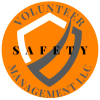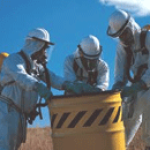03-29-2024 - HazCom and the Globally Harmonized System - Supervisor - Nashville, TN
Training Provider: Volunteer Safety Management
Date: Friday, March 29, 2024 from 10:00am to 12:00pm
Location: Nashville, TN
 No Reviews
No Reviews
We're sorry, but registration for this event has ended
View Upcoming HazCom and the Globally Harmonized System - Supervisor In Nashville, TN| TICKET TYPE | PRICE | QUANTITY |
|---|---|---|
|
One Workshop Ticket more info» | $125.00 | Registration Ended |
| Registration Ended | ||
Please Note: This HazCom and the Globally Harmonized System - Supervisors course is intended for those personnel that are in a supervisory role in any Hazardous Materials company, or for those individuals who are supervising workers, transport workers, and emergency responders, as well as anyone who has employees who work with chemicals. This course will focus on the written HAZCOM program requirements for employers.
Why Should You Take This HazCom and the Globally Harmonized System - Supervisor Course?
Changes to the Occupational Safety and Health Administration's (OSHA) Hazard Communication Standard (HCS) are bringing the United States into alignment with the Globally Harmonized System of Classification and Labeling of Chemicals (GHS), further improving safety and health protection for America's workers. Building on the success of OSHA's current Hazard Communication Standard, the GHS is expected to prevent injuries and illnesses, save lives, and improve trade conditions for chemical manufacturers. The Hazard Communication Standard in 1983 gave the workers the 'right to know,' but the new Globally Harmonized System gives workers the 'right to understand.'
The new Hazard Communication Standard still requires chemical manufacturers and importers to evaluate the chemicals they produce or import and provide hazard information to employers and workers by putting labels on containers and preparing safety data sheets. However, the old standard allowed chemical manufacturers and importers to convey hazard information on labels and material safety data sheets in whatever format they chose. The modified standard provides a single set of harmonized criteria for classifying chemicals according to their health and physical hazards and specifies hazard communication elements for labeling and safety data sheets.
Major Changes to the Hazard Communication Standard:
- Hazard classification: Provides specific criteria for classification of health and physical hazards, as well as classification of mixtures.
- Labels: Chemical manufacturers and importers will be required to provide a label that includes a harmonized signal word, pictogram, and hazard statement for each hazard class and category. Precautionary statements must also be provided.
- Safety Data Sheets: Will now have a specified 16-section format.
- Information and training: Employers are required to train workers by December 1, 2013 on the new labels elements and safety data sheets format to facilitate recognition and understanding.
Benefits: The new standard covers over 43 million workers who produce or handle hazardous chemicals in more than five million workplaces across the country. The modification is expected to prevent over 500 workplace injuries and illnesses and 43 fatalities annually. Once fully implemented it will also:
- Enhance worker comprehension of hazards, especially for low and limited-literacy workers, reduce confusion in the workplace, facilitate safety training, and result in safer handling and use of chemicals;
- Provide workers quicker and more efficient access to information on the safety data sheets;
- Result in cost savings to American businesses of more than $475 million in productivity improvements, fewer safety data sheet and label updates and simpler new hazard communication training; and
- Reduce trade barriers by harmonizing with systems around the world.
Who Should Take This Course?
Target audiences include supervisors, employers, transport personnel and emergency responders, as well as anyone who has hazard communication training requirements for their employees.
Topics to be Covered Include:
- Role of the Supervisor on the Jobsite
- Insurance and Liability Issues for Employers
- Background on GHS and how the GHS program will function.
- Factors that influenced the development of the GHS communication tools.
- Changes in hazard definitions and classifications.
- New system of label elements for hazard class and category (signal words, pictograms, hazard statements, etc.).
- Overview of 16-section Safety Data Sheet (SDS) format.
Effective Dates and Requirements for Compliance:
December 1, 2013 - Train Employees on the new label elements and MSDS Format (For Employers)
June 1, 2015 - Compliance with all modified provisions of this final rule, except: (For Chemical manufacturers, importers, distributors and employers)
December 1, 2015 - The Distributor shall not ship containers labeled by the chemical manufacturer or importer unless it is a GHS label. (For Chemical manufacturers, importers, distributors and employers)
June 1, 2016 - Update alternative workplace labeling and hazard communication program as necessary, and provide additional employee training for newly identified physical or health hazards. (For Employers)
Data Transition Period - Comply with either 29 CFR 1910.1200 (this final standard), or the current standard
| COURSE LOGISTICS | |
|---|---|
| Certificates | Certificate distribution depends on the course type. |
| Parking | Parking Available |
201 Crossings Place, Nashville, TN 37013
Friday, March 29, 2024 from 10:00am to 12:00pm

Volunteer Safety Management offers OSHA certification training, CPR/AED, First Aid, Bloodborne Pathogen, PPE Safety, HAZCOM with GHS and much more!

Questions? 954-400-0595


